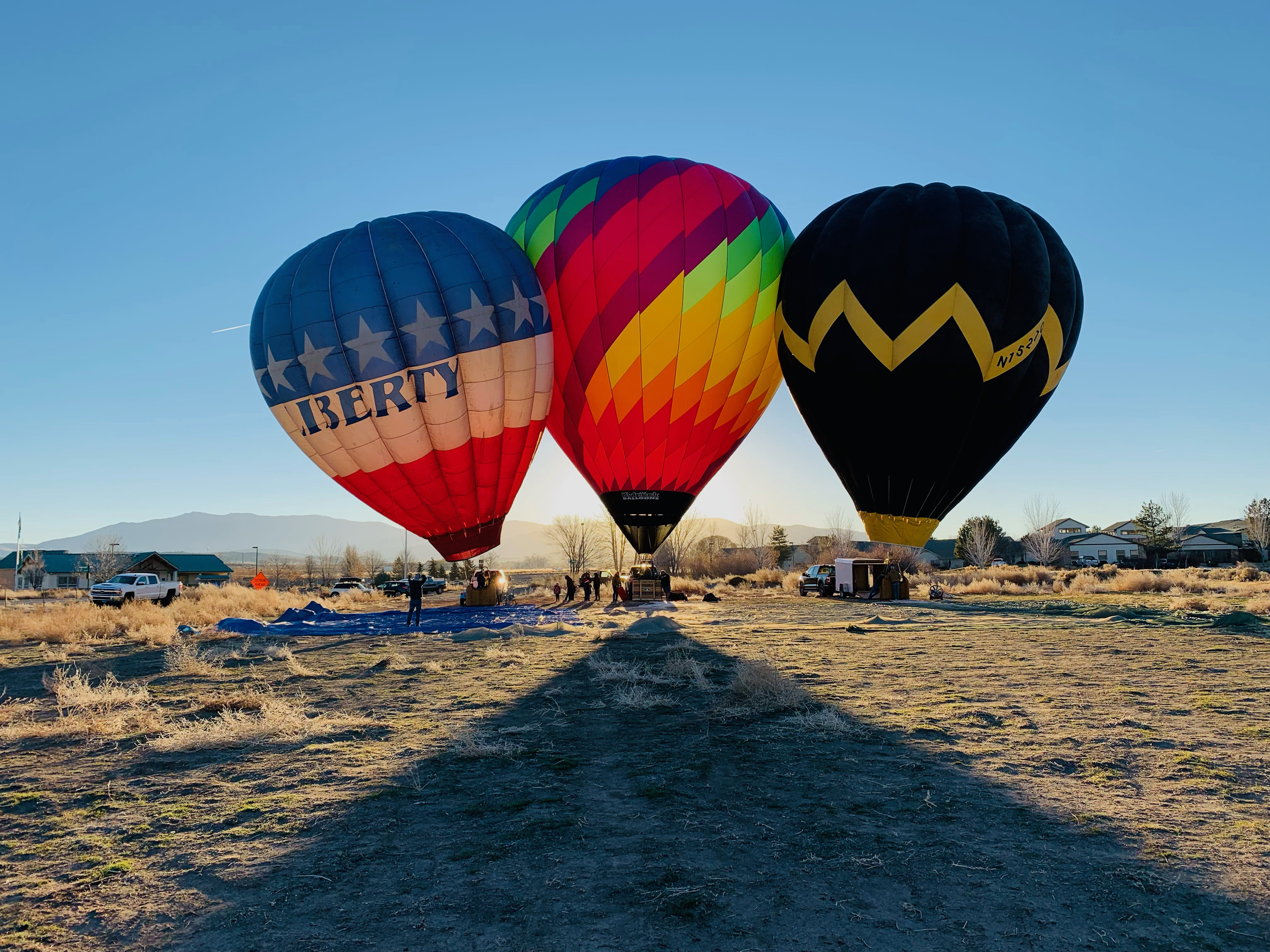
ABOUT BALLOONING
Answering some of your questions about hot air ballooning.
Frequently Asked Questions
Why do balloons fly in the Carson Valley?
Because balloons require relatively calm winds to fly, the Carson Valley is ideal because it often has a weather phenomenon called an inversion layer, which helps keep winds mild, especially in the morning hours. In addition, the Carson Valley has some of the kindest landowners who often invite balloonists to land on their property.
How do you become a balloon pilot?
Ballooning is controlled by the FAA like all other forms of aviation. The FAA sets the instruction and testing rules required for balloon pilots. The minimum age to begin learning to fly balloons is 14 years old. For more information, read the free Balloon Flying Handbook available online.
Where do balloons launch and land?
Where balloons fly is dictated by FAA airspace rules. Balloons, unlike airplanes, don’t have to launch and land from an airport (although they are allowed to at some airports). Balloons launch and land in open areas such as fields, driveways and streets that are not busy.
How do you steer a balloon?
Balloons don’t have a steering mechanism like cars or airplanes. However, balloon pilots can control the up and down of the balloon by using their burners and vents to find wind layers at different altitudes that move in different directions. The real skill of a balloon pilot is using these discreet wind layers to navigate the balloon to their desired location.
How high do balloons go?
Balloons can fly as high as 12,500 feet without having to use oxygen for breathing, but most balloons fly from treetop level to a couple thousand feet off the ground.
What kind of fuel do balloons use?
Hot air balloons use liquid propane gas in special fuel tanks designs solely for use in balloons.
What are balloons made of?
Balloons are made of either ripstop nylon or polyester fabric, which is coated to help hold air inside the balloon. The lower part of a balloon around the burner is made of fire-resistant Nomex fabric.
How do you get back after you fly in a balloon?
Hot air ballooning requires a chase crew of 2-3 people for each flight, usually made up of friends and family members. The chase crew helps unpack and inflate the balloon, then follows the balloon in flight by keeping an eye on the balloon as well as using technology such as Glympse to track the balloon’s location. The crew helps the pilot get landowner permission to land, and also helps deflate and pack up the balloon.
How far do balloons fly?
A typical hot air balloon carries enough fuel on-board to fly for 1-2 hours.
How fast do balloons go?
Balloons fly with the wind, so their speed is the same as the windspeed. For safety, balloons fly in approximately 7 mph or less.
Why do balloons only fly in the morning?
In many western/desert states balloons generally only fly in the morning right at sunrise due to the thermals and instability that forms late morning and continues through the day as the earth heats.
How did ballooning begin?
Ballooning is the oldest form of manned flight. Credit for the invention of ballooning goes to a pair of 18th-century brothers and paper makers, Joseph-Michel and Jacques-Étienne Montgolfier of Annonay, a small town just south of Lyon, France.
On September 19, 1783 Pilatre De Rozier, a scientist, launched the first hot air balloon called 'Aerostat Reveillon'. The passengers were a sheep, a duck and a rooster and the balloon stayed in the air for a grand total of 15 minutes before crashing back to the ground.
The first manned attempt came about 2 months later when, on November 21, 1783 the first free flight carrying a human occurred in Paris, France in a hot air balloon made of paper and silk made by the Montgolfier brothers. The balloon carried two men, Francois Pilatrê de Rozier and Francois Laurent, Marquis of Arlanders. They stood on a circular platform attached to the bottom of the balloon. They hand-fed the fire through openings on either side of the balloon’s skirt. The balloon reached an altitude of at least 500 feet and traveled about 5½ miles before landing safely 25 minutes later.
November 21, 1783 the first free flight in a balloon carrying humans occurred in Paris, France.

